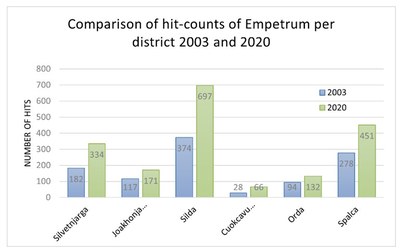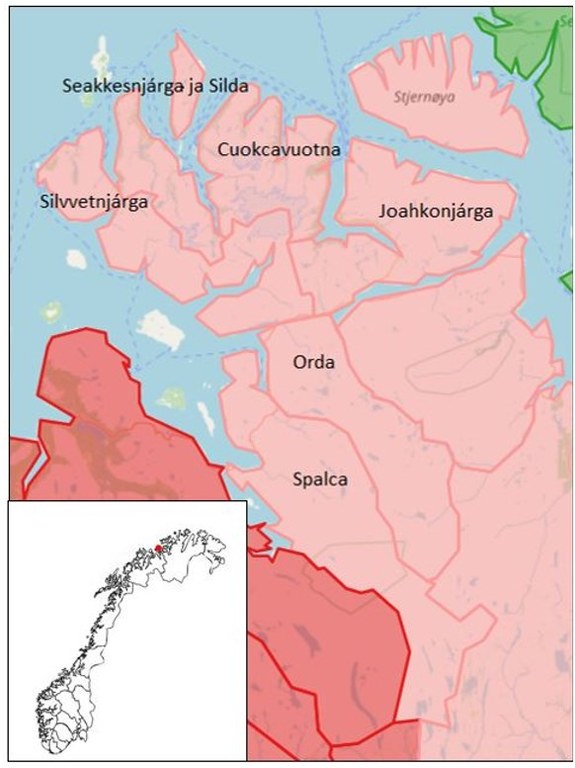Climate, Reindeer and Vegetation: The Development of Empetrum nigrum biomass on Reindeer Summer Pastures
Sophia Zielosko
I used linear mixed modelling to try to predict the outcomes and causes for increasing Empetrum nigrum (crowberry) growth in reindeer summer pastures in western Finnmark.
Empetrum nigrum is a plant species, native to Scandinavia with invasive properties. It is allelopathic, chemically changing the soil where it grows and affecting other plant species negatively.
The coastal areas of western Finnmark are used by Sami reindeer herders as summer pastures for semi-domesticated reindeer (Rangifer tarandus). Large herbivores like reindeer (Rangifer tarandus) can impact ecosystems and change plant species composition, but they are also dependant on available forage.
With data from a resurvey of 6 separated reindeer summer pastures in Northern Norway I have shown that the biomass of Empetrum has increased on average by 77% since the last survey in 2003. The spatial extent of Empetrum has also increased by around 5%.
This increase may have implications for the success of reindeer herding in Finnmark, since Empetrum is not good forage for herbivores.
The increase of Empetrum biomass over time was statistically significant.
Over the observed time span, the 30-year average air temperature increased by ~0.4 degrees in the same area. Reindeer numbers remained relatively stable during that time. The models showed large confidence intervals for temperature and reindeer densities, meaning that the effects of temperature and reindeer on Empetrum remain largely uncertain.
Much of the residual variability (33% for biomass and 40% for extent) was explained by the location of the plots (blocks and districts). Hence, an uneven increase and distribution of Empetrum can be expected, leading to variable pasture quality changes in different locations.
The heterogeneous terrain and variable ecosystem pressures, make predictions in this area challenging, yet the increase of Empetrum biomass could be clearly predicted. The significant increase has serious consequences for reindeer herding in the researched areas and Empetrum may have to be managed.


Fig. 1. Left: Results of point intercept hit-counts per district in 2003 and 2020.
Right: reindeer summer pastures. Source: reinbase.no (2022), edited. Inset: Area location in Norway. Source: vecteezy.com (2022), edited.
